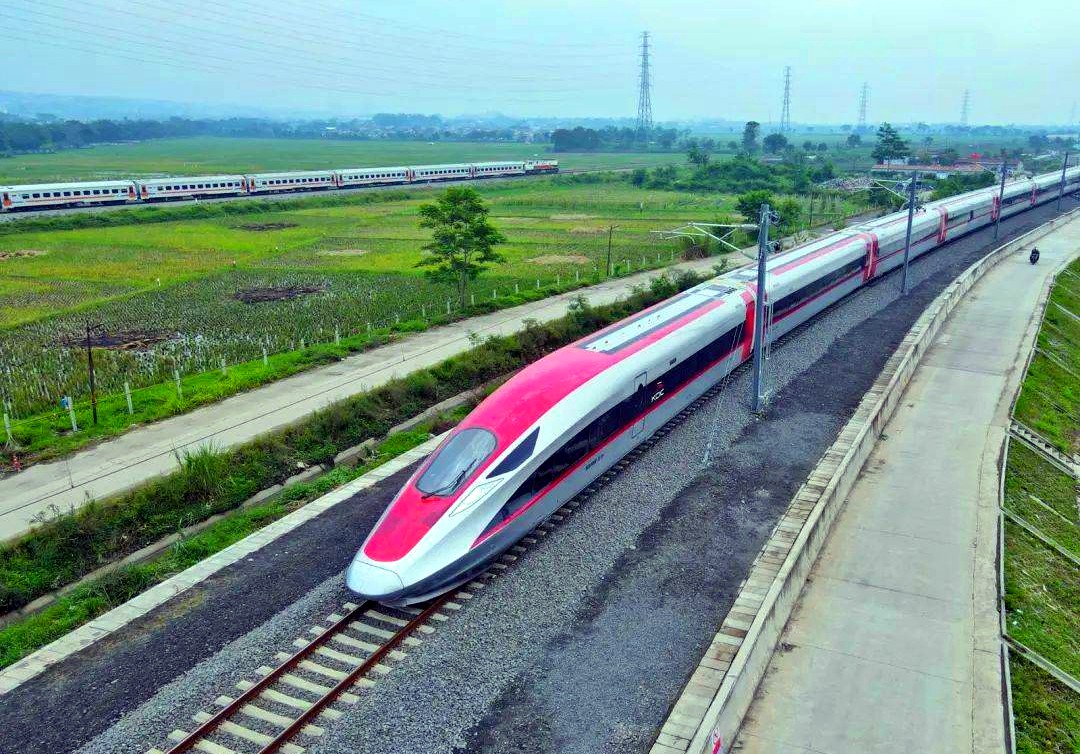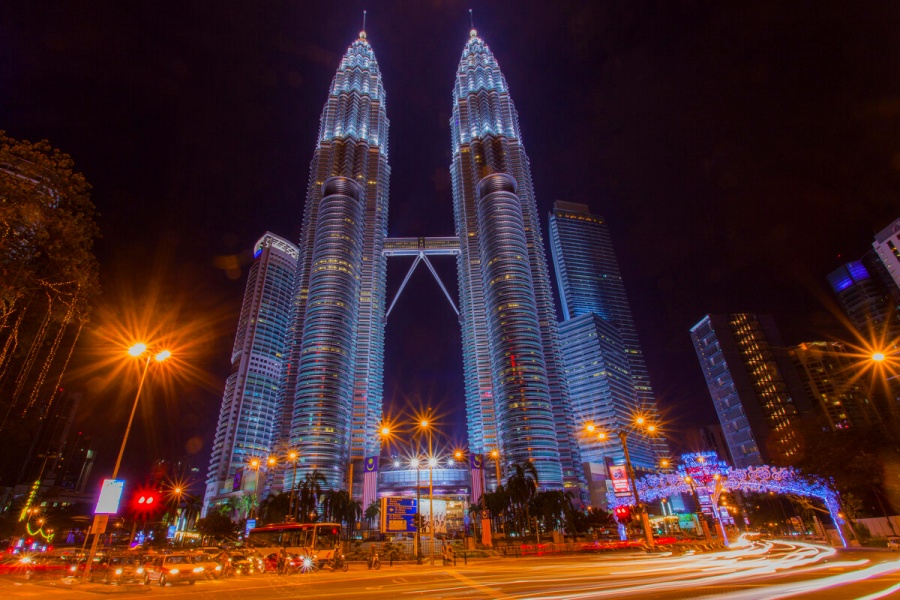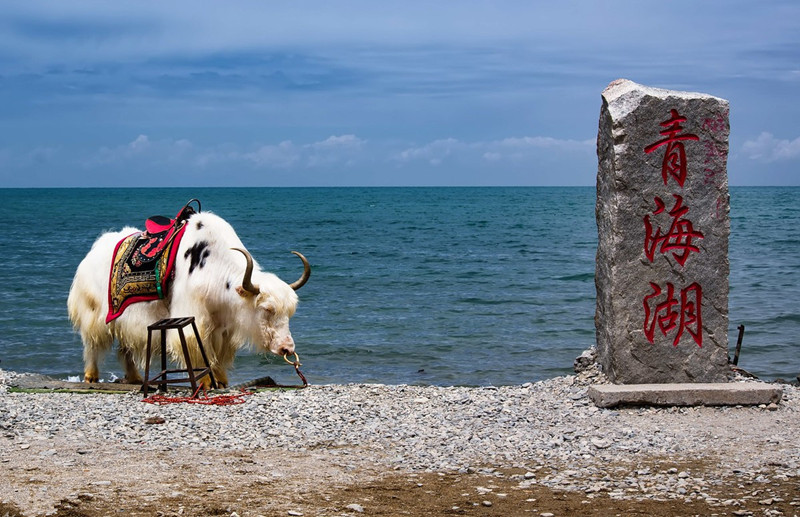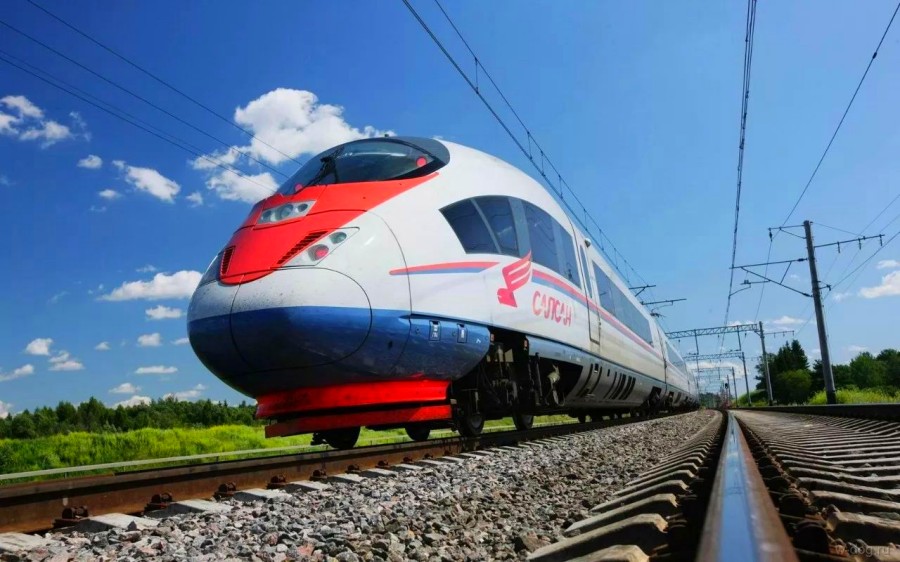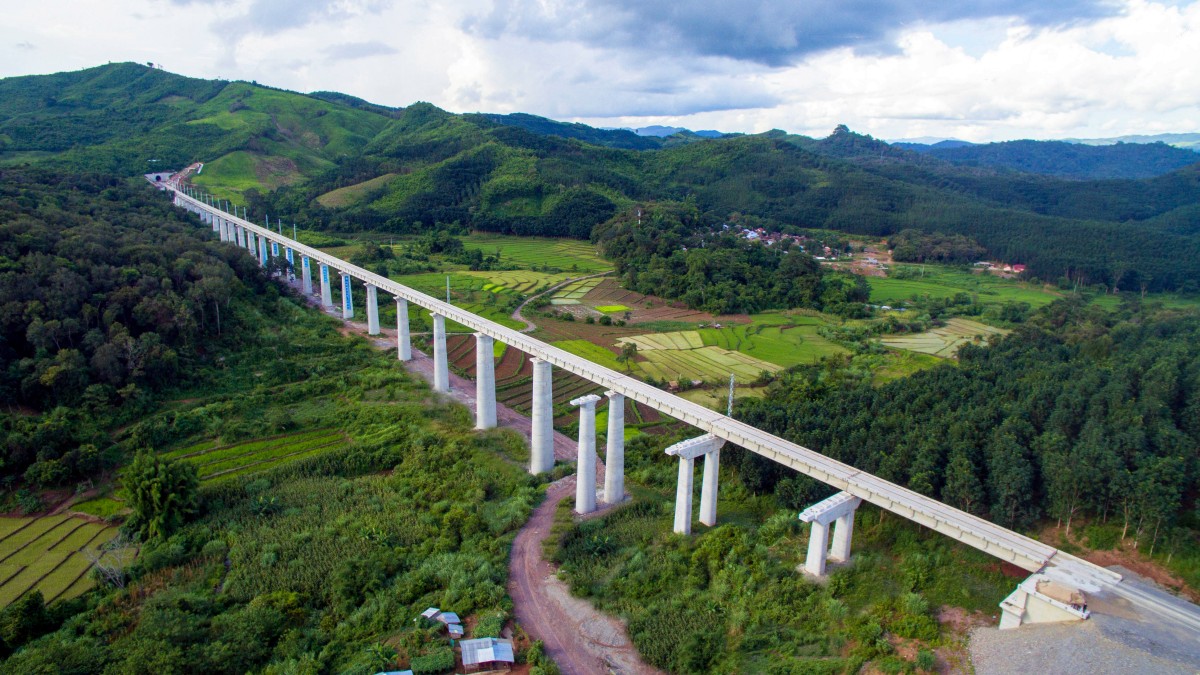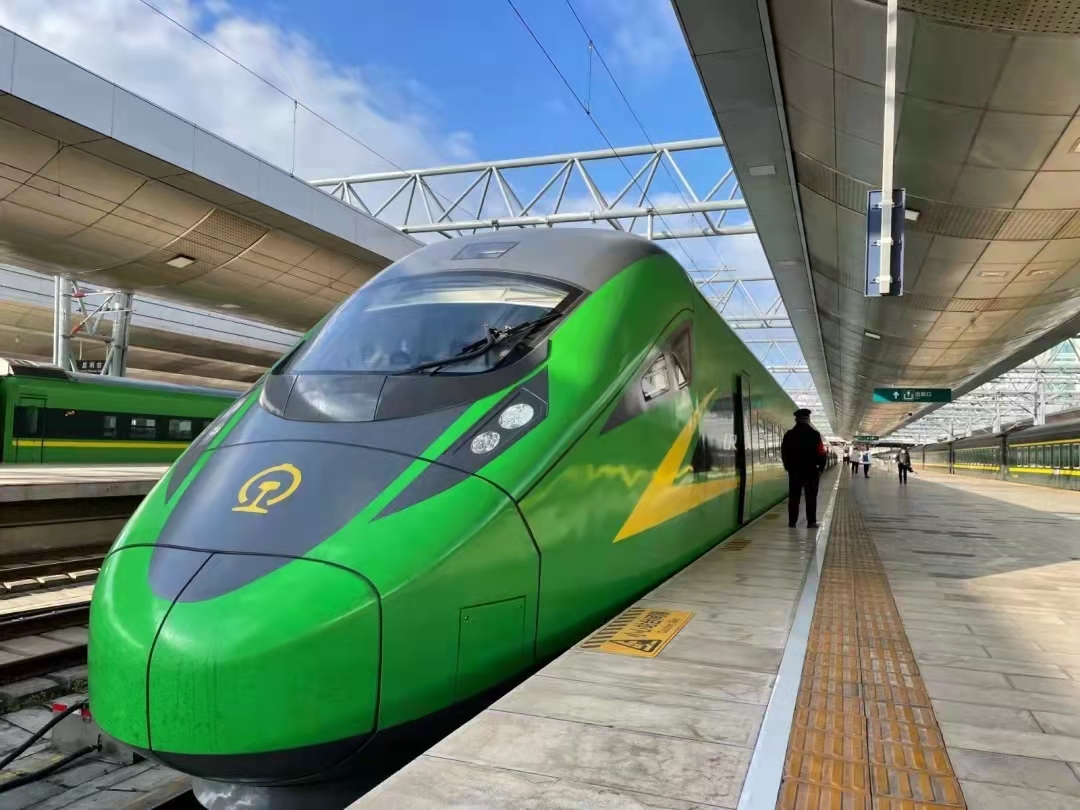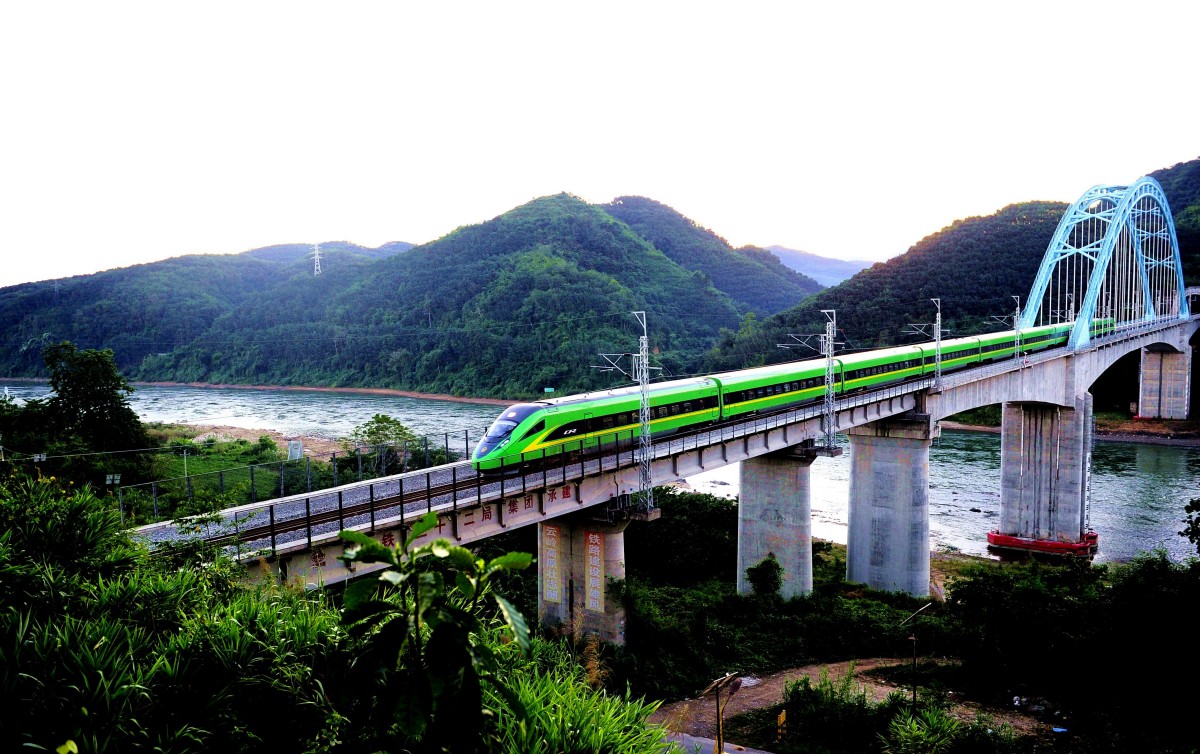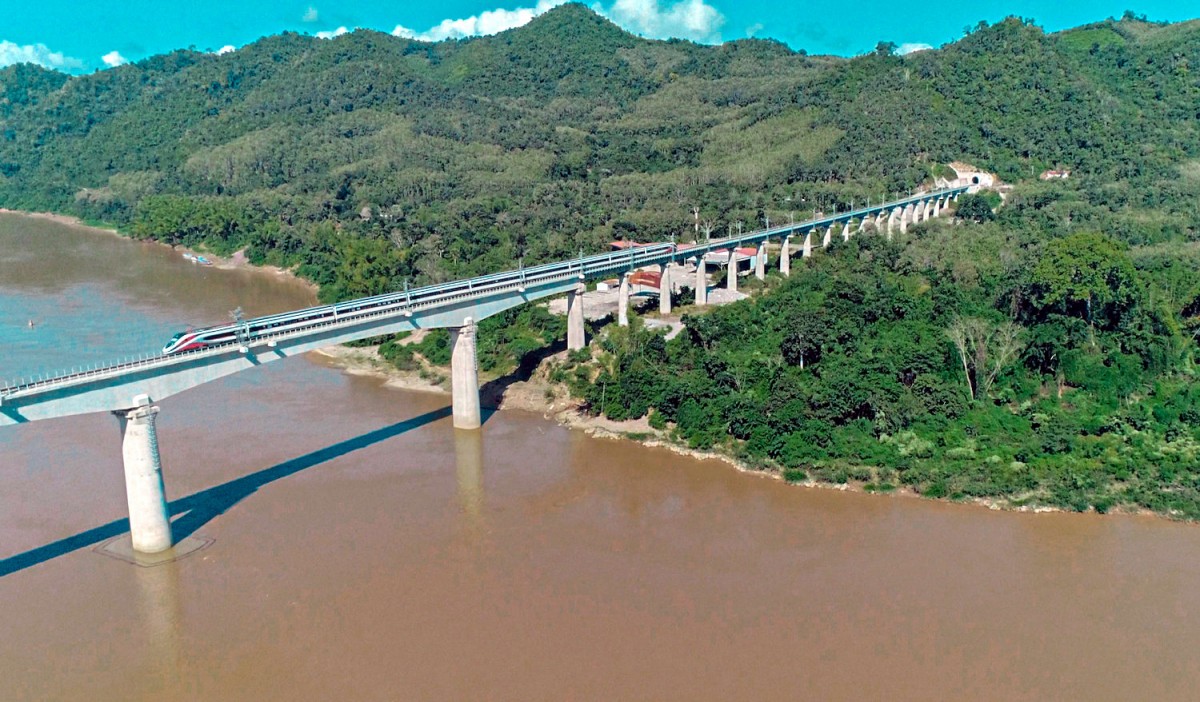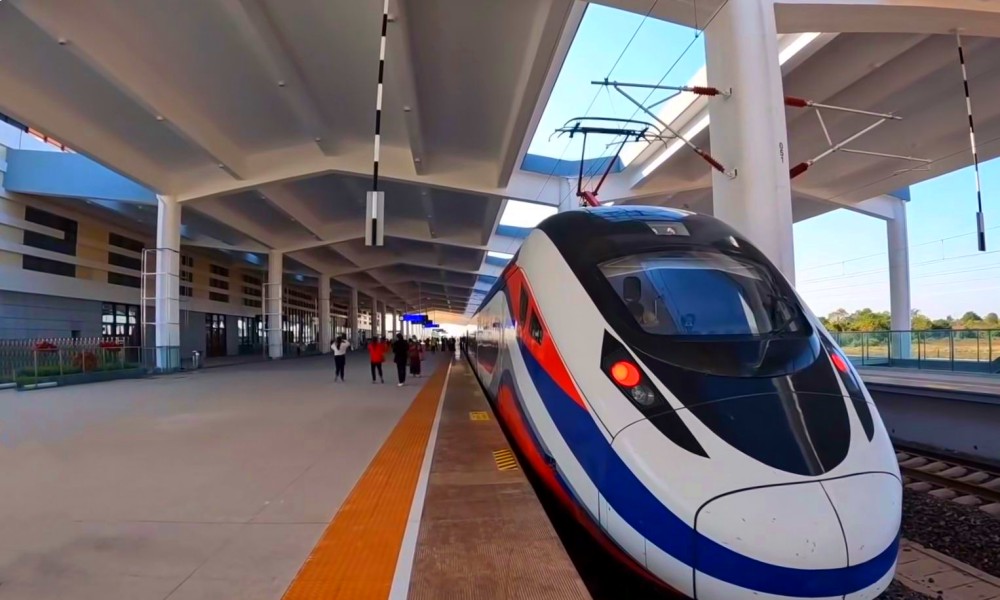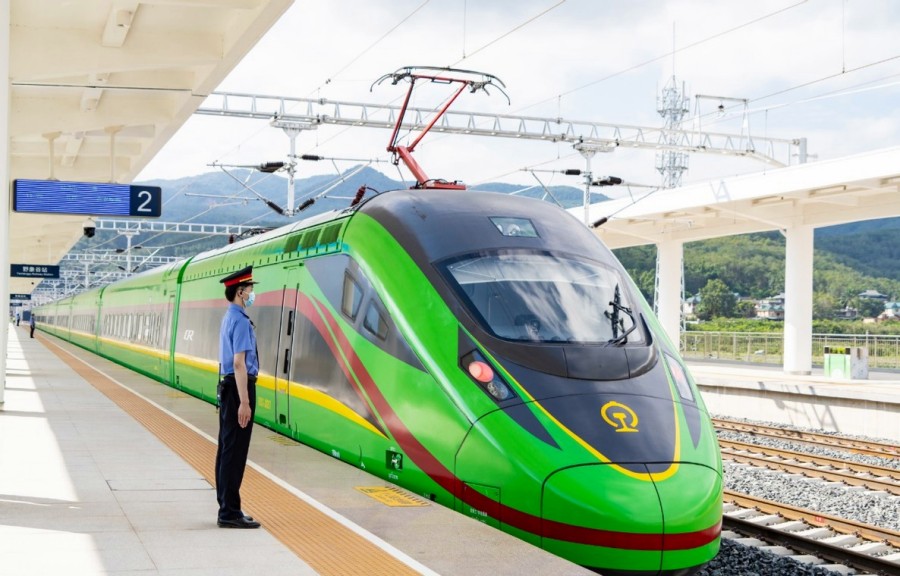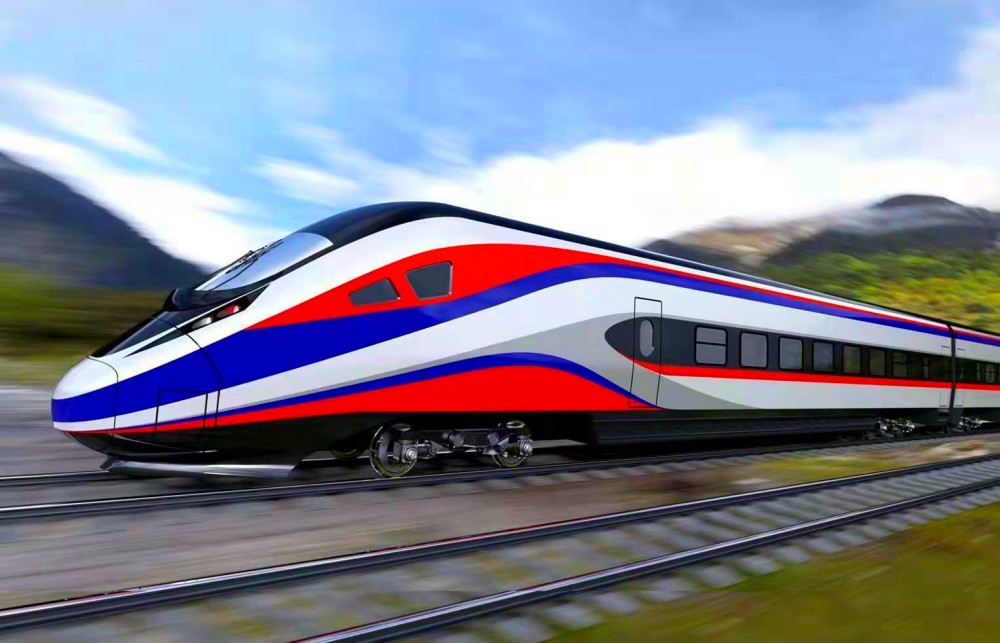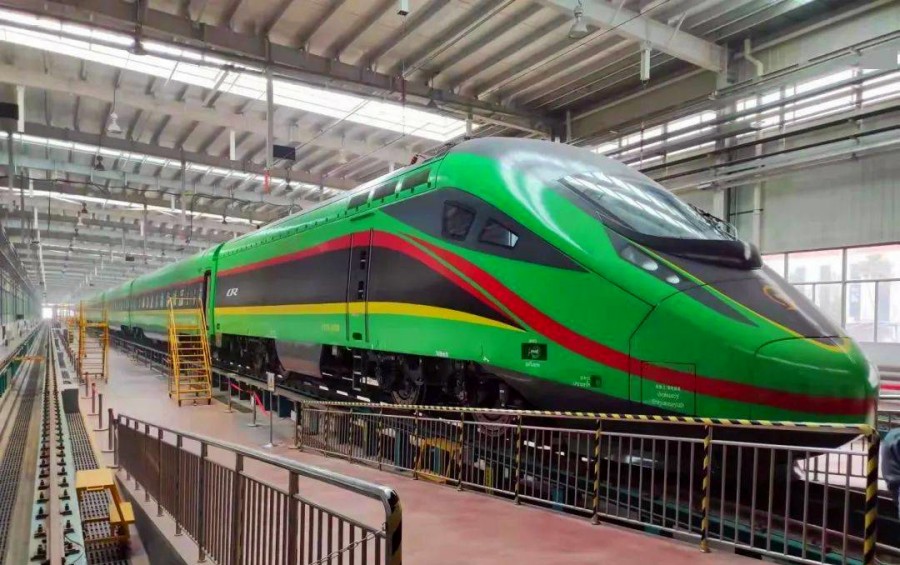Description
The Trans-Asian Railway (TAR) is an ambitious project designed to create an integrated freight railway network stretching across Europe and Asia. Spearheaded by the United Nations Economic and Social Commission for Asia and the Pacific (UNESCAP), the TAR aims to improve transportation connectivity between Eurasian countries, facilitate trade, and support the economies of landlocked nations.
Background and Initiation of the Project
The Trans-Asian Railway project was first conceived in the 1950s, a time when air travel and shipping were not as developed or efficient as they are today. The primary objective was to create a continuous rail link that would stretch from Singapore in Southeast Asia to Istanbul in Turkey, covering a distance of approximately 8,750 miles (14,080 km). The project promised to significantly reduce transportation costs and shipping times for goods traveling between Europe and Asia. At the time of its initiation, the global transportation infrastructure was primarily reliant on sea routes and airplanes, which were still in their infancy in terms of commercial viability. The TAR sought to fill this gap by creating an efficient and reliable land-based transport option for moving goods across the continent.The TAR Network: Connecting Continents
Route Overview
The Trans-Asian Railway aims to create a seamless rail link from Singapore to Istanbul, passing through China, India, Russia, and Turkey, among others. The envisioned route covers more than 8,750 miles (14,080 km), providing a vital connection between Asia and Europe. Some key sections of the TAR include:- Singapore to Malaysia: Connecting the island state of Singapore with neighboring Malaysia via rail, providing easy access to Southeast Asia.
- China to Kazakhstan: A critical link through China and into Central Asia, allowing goods to move between the vast industrial markets of China and the landlocked nations of Central Asia.
- Kazakhstan to Russia: Linking Kazakhstan with Russia, forming part of the main transcontinental route to Europe.
- Russia to Turkey: Connecting the Russian Federation with Turkey, the gateway to Europe.
Landlocked Nations and Economic Growth
One of the major goals of the Trans-Asian Railway is to facilitate the economic growth of landlocked nations, such as Afghanistan, Mongolia, Nepal, Kazakhstan, and the Central Asian republics. By providing them with a reliable and cost-effective railway connection to international markets, the TAR project opens up new avenues for trade and economic integration.- Mongolia: A key beneficiary of the TAR, Mongolia is strategically positioned between Russia and China. Access to the Trans-Asian Railway will significantly improve Mongolia’s trade connectivity with both Eastern and Western markets.
- Afghanistan and Central Asia: The railway network is expected to stimulate economic growth in Afghanistan and Central Asia, regions that have historically faced significant logistical challenges due to their landlocked nature.
Economic and Trade Implications
Boosting Eurasian Trade
One of the primary goals of the Trans-Asian Railway is to accommodate the increasing trade flows between Eurasian nations. The network would facilitate the easy and efficient movement of goods from Asia to Europe, thereby promoting economic integration and cooperation.- Containerized Freight: The TAR is designed to handle containerized freight, making it possible to transport manufactured goods, electronics, agricultural products, and more. The rail network would serve as a viable alternative to sea freight, particularly for time-sensitive cargo.
- Cost and Time Efficiency: The railway provides an alternative to the often expensive and time-consuming sea freight and air transport options. By reducing shipping times and costs, the TAR could enhance global supply chains and promote more efficient trade.
- Energy and Raw Materials: The TAR could also be a vital route for the transportation of energy resources such as oil, natural gas, and coal, as well as raw materials from Central Asia and Russia to Asia and Europe.
Info List
- Attractions
- Destinations
- Specicals
- Gallary
- Topic
Tours
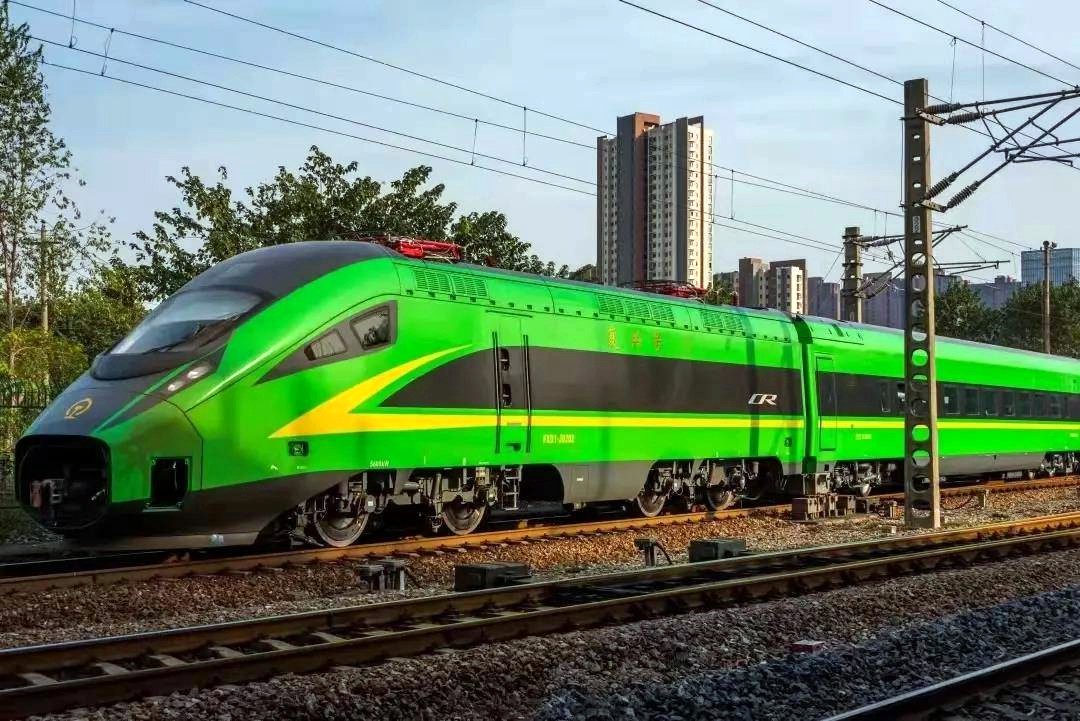



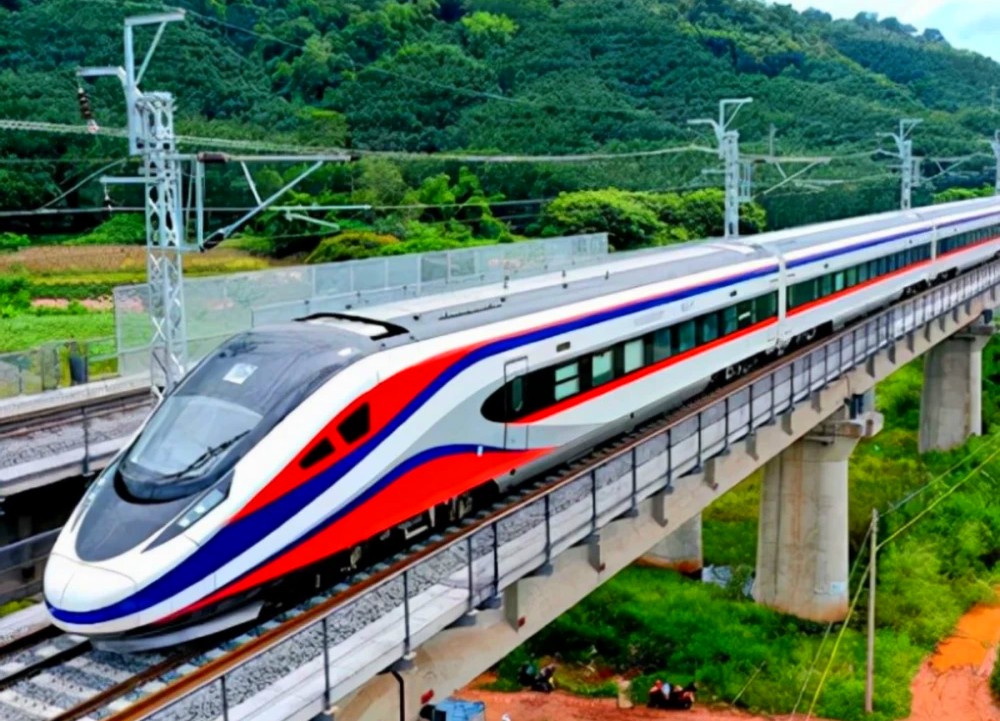



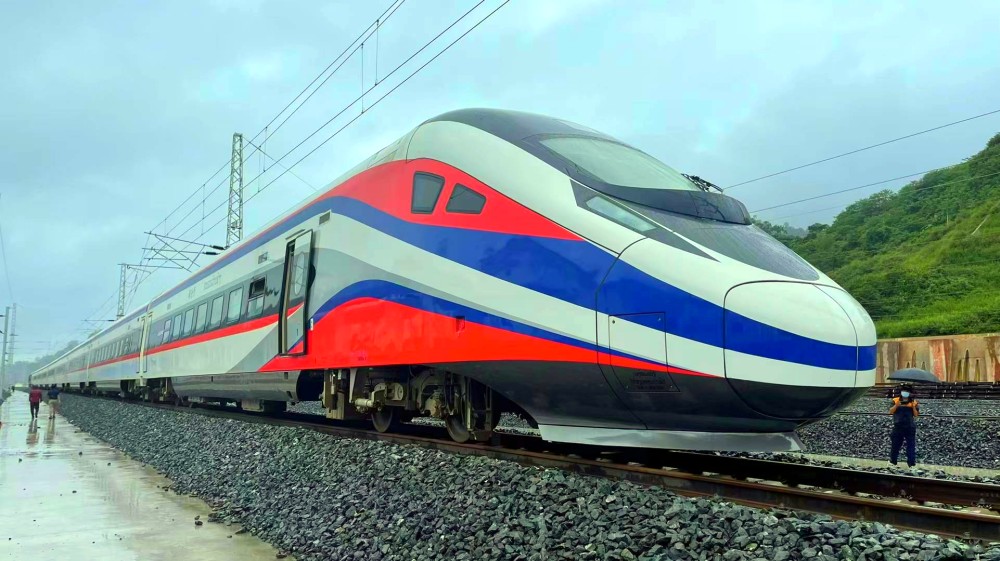
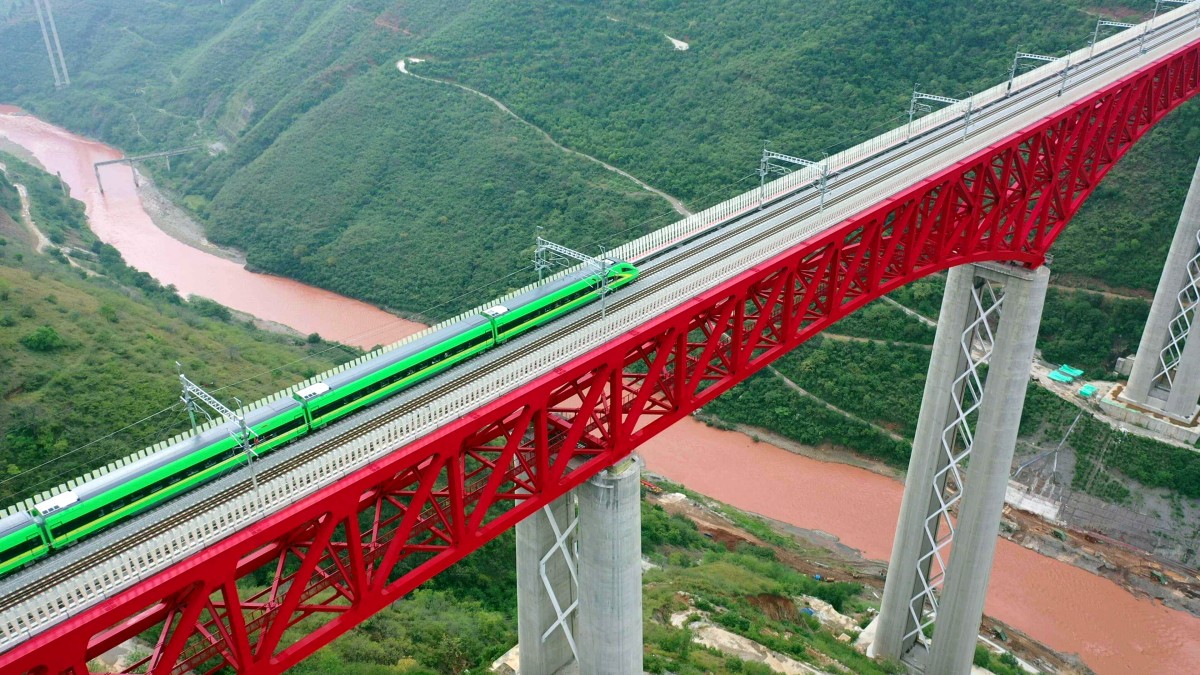








China-Laos-Thailand Railway
The China-Laos-Thailand Railway is a groundbreaking infrastructure project designed to strengthen regional connectivity, boost economic cooperation, and facilitate trade and tourism between China, Laos, and Thailand. This transnational rail network is part of China’s Belt and Road Initiative (BRI), enhancing ties between Southeast Asia and the broader region. The railway is divided into several key sections, connecting major cities like Kunming, Vientiane, Bangkok, and Chiang Mai.
In this article, we will explore the China-Laos Railway from Kunming to Vientiane, the Laos-Thailand Railway from Vientiane to Bangkok, and the alternative Laos-Thailand Railway route through Luangnamtha and Chiang Mai.
The China-Laos-Thailand Railway is a transformative project that will significantly improve connectivity between China, Laos, and Thailand, making travel and trade more efficient and accessible. With the completion of key sections of the railway, it will help promote regional economic integration, tourism, and cultural exchange. The ongoing development of this railway promises to reshape the future of Southeast Asian transportation and connectivity, aligning with broader goals of enhancing trade and cooperation under the Belt and Road Initiative.
1. China-Laos Railway: Kunming to Vientiane
The China-Laos Railway forms the first significant stretch of the China-Laos-Thailand Railway, connecting Kunming, the capital of Yunnan Province in China, to Vientiane, the capital of Laos. This railway line enhances connectivity between China and Southeast Asia, allowing for the efficient movement of passengers and goods.Key Features
- Total Length: 414 kilometers
- Route: The railway starts in Kunming, China, and passes through the Laos-China border at Boten before reaching Vientiane, Laos.
- Operational Timeline: The Kunming to Vientiane section opened in 2021 and began serving both freight and passenger traffic.
- Technology: High-speed trains are employed on this route to reduce travel times and offer a comfortable experience for passengers.
Significance
- Trade and Economic Growth: The railway connects China’s Yunnan Province with Laos, facilitating the export of Chinese goods to Southeast Asia and the import of Laotian resources to China. Key commodities include minerals, agricultural products, and manufactured goods.
- Tourism: This railway makes travel between China and Laos faster and easier, significantly boosting tourism. Passengers can quickly access Laos' key attractions, including the UNESCO-listed town of Luang Prabang and the capital Vientiane.
- Border Crossings: The route crosses the Laos-China border at Boten, a vital gateway for goods and travelers.
2. Laos-Thailand Railway: Vientiane to Bangkok
The second part of the China-Laos-Thailand Railway runs between Vientiane (Laos) and Bangkok (Thailand), crossing the Lao-Thai border at Nong Khai.Key Features
- Total Length: Approximately 150 kilometers
- Route: Starting from Vientiane, the line travels south through Nong Khai at the border with Thailand, then continues onward to Bangkok, Thailand’s capital.
- Connections: This section connects with the Thai rail network, enabling passengers to travel seamlessly from Laos to Thailand.
Significance
- Cross-Border Integration: This rail segment plays a key role in connecting Laos and Thailand. It makes the movement of people and goods more efficient between the two countries, boosting regional trade and economic activity.
- Tourism and Commerce: With the improved transportation infrastructure, tourists can easily travel between Laos and Thailand, while businesses can benefit from improved logistics and faster access to regional markets.
3. Laos-Thailand Railway: Luangnamtha to Chiang Mai to Bangkok
An alternative route of the Laos-Thailand Railway runs from Luangnamtha in northern Laos to Chiang Mai in Thailand before continuing southward to Bangkok.Key Features
- Total Length: Approximately 600 kilometers
- Route: This route starts from Luangnamtha, a town in the Laos-China border region, and connects to Chiang Mai in Thailand via Luang Prabang and other major towns. From Chiang Mai, the railway continues south to Bangkok.
- Operational Timeline: The Luangnamtha to Chiang Mai section is still in development, with expectations for completion in the next few years.
Significance
- Northern Laos to Thailand Connectivity: This route is crucial for connecting northern Laos, including Luangnamtha, with Chiang Mai, the cultural and tourism hub of northern Thailand.
- Improved Travel for Tourists: Chiang Mai and Luangnamtha are popular destinations for adventure tourism, trekking, and cultural experiences. This route will make it easier for tourists to explore northern regions of both Laos and Thailand.
- Economic Opportunities: The line improves access for trade between northern Laos and Thailand, especially for goods coming from China via Luangnamtha. The route is expected to stimulate business activities, particularly in the agricultural and manufacturing sectors.
4. Benefits of the China-Laos-Thailand Railway
Economic Development and Trade
The China-Laos-Thailand Railway serves as a vital trade and economic corridor, linking China’s economic powerhouses with Laos and Thailand, two rapidly developing economies. By streamlining logistics and reducing transportation costs, the railway boosts regional trade.- China to Southeast Asia Trade: Goods from China can easily reach Thailand and Laos, with reduced shipping time and cost.
- Agricultural and Industrial Products: Laos and Thailand can export their agricultural and industrial products more efficiently to China and other parts of Southeast Asia.
Tourism and Regional Connectivity
The railway is poised to become a key factor in the tourism industry by making cross-border travel between China, Laos, and Thailand quicker and more accessible.- Seamless Travel: The interconnected routes provide seamless travel between the three countries. For example, travelers can start in Kunming, China, pass through Vientiane, Laos, and continue to Bangkok, Thailand.
- Tourism Growth: The railway will allow easy access to major tourist attractions like Luang Prabang in Laos, Chiang Mai in Thailand, and Kunming in China.
Infrastructure Development
This railway network not only improves regional transportation but also contributes to the development of surrounding areas. Key infrastructure projects along the railway, including stations, bridges, and tunnels, will bring development opportunities to areas that were previously underserved.- Job Creation: Construction and maintenance of the railway generate job opportunities, benefiting local communities.
- Urban Development: Towns and cities along the railway routes are expected to grow economically and socially, driven by increased connectivity and trade.
5. Challenges and Future Prospects
Challenges
- Border Issues and Logistics: The China-Laos-Thailand Railway crosses multiple borders, requiring careful coordination between governments to ensure smooth operations, customs procedures, and regulations.
- Environmental Considerations: Building the railway through mountainous and forested regions can have environmental implications. Sustainable practices and mitigation efforts are needed to preserve local ecosystems.
- Economic Sustainability: Ensuring that the railway remains economically viable in the long term, especially in less populated regions, will be important for its success.
Future Prospects
- Expansion: The China-Laos-Thailand Railway is part of a broader plan to connect Southeast Asia more effectively. Future extensions may connect to Myanmar, Cambodia, and Vietnam, enhancing regional integration even further.
- Continued Investment: Governments are likely to continue investing in the railway to enhance its capabilities, modernize infrastructure, and improve services for both freight and passengers.
The China-Laos-Thailand Railway is a transformative project that will significantly improve connectivity between China, Laos, and Thailand, making travel and trade more efficient and accessible. With the completion of key sections of the railway, it will help promote regional economic integration, tourism, and cultural exchange. The ongoing development of this railway promises to reshape the future of Southeast Asian transportation and connectivity, aligning with broader goals of enhancing trade and cooperation under the Belt and Road Initiative.
China-Vietnam Railway
The China-Vietnam Railway system is an essential transportation network linking China and Vietnam. These railways enhance bilateral trade, cultural exchanges, and tourism, facilitating both passenger and freight transportation across the border. The system consists of several key rail corridors, including the Guangxi-Vietnam Railway and the Yunnan-Vietnam Railway.
The China-Vietnam Railway, including the Guangxi-Vietnam Railway and the Yunnan-Vietnam Railway, forms an essential part of the transportation infrastructure connecting China and Vietnam. These rail corridors facilitate the movement of goods, promote tourism, and support broader economic integration. As modernization projects continue, both railways are set to become even more integral to the economic ties between the two countries, enhancing trade, tourism, and regional cooperation.
Guangxi-Vietnam Railway: Nanning to Hanoi
The Guangxi-Vietnam Railway connects the Chinese city of Nanning in Guangxi to Hanoi, the capital of Vietnam. This route plays a crucial role in cross-border transportation and economic exchange between the two countries.Key Route Information
- Route: Nanning (China) – Pingxiang – Hanoi (Vietnam)
- Distance: Approximately 350 km (China to Vietnam)
- Travel Time: About 8-10 hours
- Railway Type: Meter Gauge (narrow gauge)
- Operational Since: The railway has been operating since the 1950s, with continued updates to improve infrastructure and services.
- Border Crossing: The route crosses through the Dong Dang checkpoint at the border between China and Vietnam.
Major Stops and Locations
- Nanning: Capital of Guangxi, a major transportation hub connecting southern China to Southeast Asia.
- Pingxiang: Border city where the Chinese and Vietnamese rail networks meet.
- Dong Dang: Border town in Vietnam where travelers undergo customs and immigration checks.
- Hanoi: The capital of Vietnam, and the final stop on the rail route.
Importance of the Route
- Economic Importance: The railway is vital for facilitating the flow of goods such as coal, textiles, machinery, and agricultural products between China and Vietnam.
- Passenger Transport: It provides an efficient mode of travel for tourists and business travelers between Nanning and Hanoi, competing with road and air travel in terms of cost and comfort.
- Strategic Role: The railway serves as an important corridor for China's Belt and Road Initiative, promoting trade and investment in both countries.
Recent Upgrades
- Modernization: The Guangxi-Vietnam Railway has undergone several upgrades to improve the comfort and speed of trains, including the addition of newer rolling stock and infrastructure improvements.
- Infrastructure Projects: There are plans for future expansions and even electrification to improve travel times and further integrate the region.
Yunnan-Vietnam Railway: Kunming to Hanoi
The Yunnan-Vietnam Railway links Kunming, the capital of Yunnan Province in southwestern China, with Hanoi, the capital of Vietnam. This railway provides a critical connection for trade, tourism, and regional integration between the two nations.Key Route Information
- Route: Kunming (China) – Hekou – Lao Cai – Hanoi (Vietnam)
- Distance: Approximately 700 km
- Travel Time: Approximately 12-14 hours
- Railway Type: Meter Gauge (narrow gauge)
- Operational Since: The line has been operational since the 20th century, with numerous enhancements over the years.
- Border Crossing: The railway crosses at Hekou (China) and connects with Lao Cai (Vietnam).
Major Stops and Locations
- Kunming: The capital of Yunnan, an important economic and transportation hub in southwestern China.
- Hekou: The border town in China where the railway meets the Vietnamese network.
- Lao Cai: A border town in Vietnam that facilitates the transfer between the Chinese and Vietnamese rail systems.
- Hanoi: The final destination of the route, Vietnam’s capital city.
Significance of the Route
- Economic and Trade Corridor: The railway is essential for the movement of goods like agricultural products, machinery, and consumer goods. It plays a key role in the regional economic integration between China and Southeast Asia.
- Tourism: The route is a popular option for tourists traveling between China and Vietnam, offering scenic views of the landscape along the way, particularly in Yunnan’s mountainous terrain and Vietnam’s rural regions.
- Regional Development: This railway is a part of China's broader initiative to increase its economic footprint in Southeast Asia, particularly through infrastructure projects such as the Belt and Road Initiative.
Recent Developments
- Modernization Efforts: The Yunnan-Vietnam Railway has seen significant infrastructure development, including improvements in rail capacity, safety, and comfort. In the future, there are discussions to upgrade the track to accommodate higher-speed trains.
- High-Speed Rail Plans: There are ongoing plans to introduce a high-speed rail system between Kunming and Hanoi, which would significantly reduce travel time and further enhance the region’s connectivity.
Key Features of China-Vietnam Railways
Border Crossings
Both the Guangxi-Vietnam and Yunnan-Vietnam railways pass through important border towns where customs and immigration procedures are conducted. The process may involve a few hours of delay for inspection, but it is relatively streamlined for both passengers and freight.- Dong Dang (Vietnam): The border station for the Guangxi route.
- Hekou (China) and Lao Cai (Vietnam): The key stations for the Yunnan-Vietnam route.
Cargo and Freight Transport
Both rail corridors play a significant role in transporting cargo across the border. This includes:- Agricultural Products: Particularly important for trade between the regions, including items like rice, tea, and fruits.
- Mining and Industrial Goods: Coal, machinery, and raw materials are frequently transported between China and Vietnam.
Passenger Services
The railways are a vital passenger route for both business and leisure travelers. The trains provide comfortable and affordable travel options between key cities such as Nanning, Kunming, Hanoi, and even cities along the route such as Pingxiang, Lao Cai, and Dong Dang.- Ticketing: Tickets can typically be purchased at the stations or online, with prices varying based on class and time of travel.
- Class Options: Passengers can choose from basic, first-class, or sleeper compartments.
The China-Vietnam Railway, including the Guangxi-Vietnam Railway and the Yunnan-Vietnam Railway, forms an essential part of the transportation infrastructure connecting China and Vietnam. These rail corridors facilitate the movement of goods, promote tourism, and support broader economic integration. As modernization projects continue, both railways are set to become even more integral to the economic ties between the two countries, enhancing trade, tourism, and regional cooperation.
China-Myanmar Railway
The China-Myanmar Railway, also known as the "China-Myanmar International Railway," begins in the city of Kunming, Yunnan Province, China, and terminates in Yangon, the largest city of Myanmar. This railway is an essential part of the western route of the Pan-Asian Railway network, connecting China with Southeast Asia. The entire length of the planned railway line from Kunming to Yangon is approximately 1,920 kilometers, with the section within China extending from Kunming to Ruili, covering 690 kilometers.
History of the Project
The idea for the China-Myanmar Railway has been in development for many years. As early as 2006, the project began to attract media attention. By May 2011, China and Myanmar had signed a memorandum of understanding (MOU) for the construction of the railway. Originally, the railway was planned to start at the deep-water port of Kyaukpyu (皎漂) in Myanmar’s Rakhine State, and it would travel from southwest to northeast across central and northern Myanmar, passing through the city of Ruili (瑞丽) in Yunnan Province, China, before reaching Kunming. The planned railway was intended to run parallel to the China-Myanmar oil and gas pipelines, which were completed in October 2013. By early 2014, natural gas imports from Myanmar to China through these pipelines reached 613,000 tons. In addition to the China-Myanmar Railway, China also planned to build cross-border railways connecting China with Vietnam, Laos, and Thailand. However, due to territorial disputes with Vietnam in the South China Sea, the progress of the China-Vietnam railway project has been slower.Strategic Significance
The Kunming-Yangon Railway is a crucial section of the western route of the Pan-Asian Railway. The proposed route, part of the broader Pan-Asian Railway network connecting Singapore and Kunming, is about 2,600 kilometers long and includes segments such as Bangkok, Three Pagodas Pass, Yangon, Lashio (腊戍), Ruili, and Kunming. Of the total distance, about 840 kilometers would require new construction. Ruili is located just 130 kilometers from Lashio, Myanmar, but currently lacks a railway connection. Once completed, the railway will provide an international corridor linking Southeast Asia and South Asia with China. This railway is expected to significantly enhance economic and trade cooperation between Myanmar and China, providing Myanmar with a new route to facilitate trade with China’s western regions. Once the China-Myanmar Railway is fully operational, it will become an international passageway connecting China to Southeast Asia and South Asia, further integrating Myanmar into the regional economic system.Plans Stalled
In June 2014, the China-Myanmar Railway was originally scheduled to begin construction. However, on July 20, 2014, officials from Myanmar’s Ministry of Rail Transportation, including Minister Min Wai, announced that the project had not yet started. The three-year period outlined in the MOU had expired, and public opposition from Myanmar’s civil organizations had intensified. Local residents and civil groups along the railway route repeatedly protested, claiming that the project could have negative impacts on their communities. Some Myanmar political parties also expressed concerns, arguing that the project had not received unanimous approval from the parliament. Myanmar media raised fears that China might use infrastructure projects as a way to interfere in Myanmar’s domestic affairs and undermine national security. Following these concerns, Myanmar officials announced the suspension of the project, which led to widespread international debate. On July 21, 2014, Chinese officials confirmed that the project was temporarily suspended. Chinese representatives stated that this delay was in response to the public’s concerns in Myanmar, and China expressed a willingness to respect the views of Myanmar’s people.Negotiations Could Still Continue
On July 24, 2014, Yang Houlan (杨厚兰), China’s Ambassador to Myanmar, held a media conference in Myanmar’s capital, Naypyidaw. During the conference, a Myanmar journalist asked why China had abandoned the Kyaukpyu-Kunming railway project and failed to renew the agreement with Myanmar. Ambassador Yang clarified that China had not given up on the project, and that if the Myanmar government and the people supported it, the project could continue. Ambassador Yang referenced a well-known Chinese saying: “To get rich, build roads first” (要致富,先修路), emphasizing that infrastructure development is essential for economic growth. He noted that he had never heard of any country where the people opposed road construction, further indicating China’s willingness to respect Myanmar’s desires. An anonymous Chinese official involved in the economic discussions stated that the Kyaukpyu-Kunming Railway project had not been canceled but was simply delayed for further negotiations.Construction Progress
The China-Myanmar Railway is part of the broader Pan-Asian Railway network, which was first proposed by Malaysia’s Prime Minister Mahathir Mohamad in 1995. The project, which seeks to connect China, Myanmar, Vietnam, Laos, Thailand, Cambodia, Malaysia, and Singapore, quickly gained international attention. The Pan-Asian Railway network includes multiple ambitious high-speed rail projects across Southeast Asia. The Kyaukpyu-Kunming railway is part of a larger plan to create a deep-water port at Kyaukpyu and connect it via railway to China. The project’s feasibility has been under discussion for several years, and in March 2011, China’s Ministry of Commerce confirmed that construction would begin in 2011. However, due to internal issues in Myanmar and technical challenges regarding the size of the tracks, the project was delayed. In April 2011, China Railway Engineering Corporation signed an MOU with Myanmar’s Ministry of Rail Transportation to begin the construction of the railway in Myanmar. The project’s total cost was initially projected at USD 20 billion, with China providing most of the funding and receiving a 50-year operational concession.External Challenges and Competition
In 2014, Japan’s government also became involved in Myanmar’s infrastructure development. Japan’s Vice Prime Minister Taro Aso visited Myanmar and announced that Japan would forgive about 3 billion yen of Myanmar’s debt. At the same time, Japan’s Foreign Minister, Fumio Kishida, pledged an additional 7.8 billion yen in aid to help build railway infrastructure in Myanmar. Some analysts have suggested that Japan’s financial assistance was aimed at countering China’s growing influence in Myanmar and preventing the construction of the China-Myanmar Railway. By 2015, the situation became even more complex. The Myanmar government expressed concerns that the railway project might not gain enough public support, leading to further delays.Recent Developments
In December 2015, the Dali-Lincang Railway, an important section of the Pan-Asian Railway, began construction. This railway is planned to connect Dali (大理) to Lincang (临沧) and will significantly reduce travel time in the region. The completion of this railway is expected to enhance trade and cultural exchanges between China and Myanmar, contributing to the broader goals of the Belt and Road Initiative. In 2016, significant progress was made on the rail construction between Guantong (广通) and Dali (大理), with investments reaching nearly 70% of the planned funds. The railway aims to provide a vital link between southwestern China and Myanmar. It is anticipated that once completed, the Dali to Ruili segment will become an essential part of the transportation corridor between China and Myanmar. By 2022, the Dali to Ruili Railway began operation, further boosting the connectivity of the China-Myanmar International Railway and marking a significant step in the construction of this important international trade route. Despite challenges and setbacks, the China-Myanmar Railway remains a key project for both countries. As negotiations continue and construction progresses, the railway is expected to play a significant role in enhancing trade and economic ties between China and Myanmar, as well as facilitating deeper connections with Southeast Asia. The completion of this railway could transform Myanmar into a crucial gateway for trade between China and South and Southeast Asia.Kunming–Singapore Railway
History of the Kunming–Singapore Railway
The Kunming–Singapore Railway, also known as the Pan-Asian Railway, is a vital transport corridor that connects China, Singapore, and mainland Southeast Asia. Initially proposed by colonial empires, the railway network has evolved into a crucial infrastructure project designed to promote regional economic integration.Background and Revival
Early Vision by Colonial Empires
The idea of linking Kunming to Singapore through a railway network was first proposed by the British and French colonial empires in the early 20th century. The purpose was to enhance connectivity across Southeast Asia and connect it with China. However, geopolitical conflicts during the 20th century led to fragmented regional railways, and the concept remained unrealized.Revival in the 21st Century
In 2006, the concept was revived when 18 Asian and Eurasian countries signed the Trans-Asian Railway Network Agreement. This agreement formally incorporated the Kunming–Singapore railway into a broader vision for regional connectivity.Route Development
The Kunming–Singapore railway network is designed to strengthen economic ties between China and Southeast Asia by connecting three major routes from Kunming, China, to Bangkok, Thailand:- Eastern Route: Via Vietnam and Cambodia
- Central Route: Via Laos
- Western Route: Via Myanmar
Modern Developments
High-Speed Rail Proposals
Plans for high-speed rail construction have been proposed to further enhance the railway's efficiency and speed. One such line, linking Bangkok to Nakhon Ratchasima, is already under construction. The completed network is expected to improve regional economic integration and strengthen China’s economic ties with Southeast Asia by facilitating more efficient transportation of goods and passengers.History of the Kunming–Singapore Railway
Colonial Railways
The British and French Empires envisioned the Kunming–Singapore railway as a way to extend their influence in the region, particularly after Russia completed the Trans-Siberian railway. Significant milestones in the early development of the railway include:- 1904–1910: The French built the Yunnan–Vietnam railway, connecting Kunming with Hanoi and Haiphong in French Tonkin (modern-day northern Vietnam).
- 1918: The southern line of Thailand's railway system connected to British Malaya’s west coast line, linking Bangkok to Singapore.
- 1930s: The British began constructing the Yunnan–Burma railway, but the project was abandoned in 1941 due to the outbreak of World War II.
- 1936: The French completed Vietnam’s main railway, running from Hanoi to Saigon using a metre-gauge system.
World War II Disruptions
Thailand–Burma Railway
During World War II, the Japanese constructed the infamous Thailand–Burma railway, using prisoners of war for its construction. However, the railway never entered commercial service and is now partially submerged by the Vajiralongkorn Dam.Missing Link Between Phnom Penh and Saigon
Meanwhile, the French failed to complete the "missing link" between Phnom Penh and Saigon, opting instead to build a highway. These disruptions, along with World War II, prevented the completion of a continuous railway line from Kunming to Singapore.21st Century Revival
ASEAN and China’s Proposal
In the early 2000s, ASEAN proposed completing the Kunming–Singapore railway, aiming to connect major cities such as Hanoi, Ho Chi Minh City, Phnom Penh, and Bangkok. This route, known as the Eastern Route, spans 5,500 km (3,400 miles). In 2004, a shorter Western Route was proposed, which would bypass Vietnam and Cambodia, instead passing through Myanmar before linking to Bangkok. By 2007, ASEAN and China had agreed on plans for three main routes:- Eastern Route: Through Vietnam, Cambodia, and Thailand.
- Western Route: Through Myanmar to Thailand.
- Central Route: Via Laos.
Key Developments
As of 2024, significant progress has been made in developing the railway network, especially with the completion of the Central Route in December 2021. This route directly connects Kunming and Singapore, marking an important step in realizing the transcontinental railway vision.Future Prospects
The revival of the Kunming–Singapore railway is a major step towards transforming regional connectivity and economic relations in Asia. The completion of the railway network is expected to enhance trade, tourism, and transportation across Southeast Asia and China, benefiting the broader region’s economic integration.Overview
| Country | Corridor / Line | Description | Designed Speed (km/h) | Length (km) | Gauge | Open Date | |
|---|---|---|---|---|---|---|---|
| Kunming–Hanoi | Kunming–Yuxi–Hekou Railway | Kunming to Yuxi upgraded in 2016. Connects the border town of Hekou with its Vietnamese counterpart at Lào Cai. | 200 (Kunming to Yuxi)140 (Yuxi to Hekou) | 388 | Standard | 2014 | |
| Kunming–Hekou Railway | Chinese section of the Kunming–Haiphong railway | 60 | 466 | Metre | 1902 | ||
| High Speed Railway | A proposed Vietnamese high-speed line to connect Hanoi to Kunming via the Kunming–Yuxi–Hekou Railway | Unknown | Unknown | Standard | Unknown | ||
| Lào Cai–Hanoi Railway | Colonial-era metre-gauge railway running between Hanoi and the China-Vietnam border at Lào Cai; part of the Kunming–Haiphong railway | ~60 | 296 | Metre | 1902 | ||
| Hanoi–Ho Chi Minh City | North–South Railway | Vietnam's north–south railway and main railway backbone | ~60 | 1726 | Metre | 1936 | |
| North-South Express Railway | A proposed high-speed line for the north–south railway | 350 | 1570 | Standard | 2035 | ||
| Ho Chi Minh City–Phnom Penh | Ho Chi Minh City–Phnom Penh Railway | Rebuilt railway connecting Phnom Penh with the Cambodia-Thailand border town of Poipet | ~90 | ~386 | Metre | 2018 | |
| High Speed Railway | Proposed railway section connecting Ho Chi Minh City and Phnom Penh | Unknown | ~250 | Unknown | Unknown | ||
| Eastern Line | Thailand's Eastern railway line | ~100 | 261 | Metre | 1907 | ||
| Country | Corridor / Line | Description | Designed Speed (km/h) | Length (km) | Gauge | Open Date | |
|---|---|---|---|---|---|---|---|
| Kunming–Yuxi | Part of the Kunming–Yuxi–Hekou main railway upgraded in 2016 | 200 | 106 | Standard | 1993 | ||
| Yuxi–Mohan | Line connecting Yuxi with the China-Laos border at Mohan | 160 | 507 | Standard | 2021 | ||
| Boten–Vientiane | First railway line in Laos spanning the country, between the Chinese border at Boten to the capital Vientiane near the Thai border | 160 | 422 | Standard | 2021 | ||
| Vientiane–Nong Khai | Vientiane–Nong Khai | First international railway line to Laos, across First Thai–Lao Friendship Bridge to Thanaleng, Vientiane Prefecture. The 9-km extension to Khamsavath station opened in 2023. | ~100 | 14 | Metre | 2009 | |
| Northeastern high-speed rail line | A new high-speed standard-gauge line (Phase 3) (including a new Mekong bridge which is 50 meters from the current one) | 250 | 16 | Standard | Unknown | ||
| Nong Khai–Bangkok | Northeastern Line | Thailand's Northeastern railway line to Nong Khai and further to the Lao border (Mekong River) | ~100 | 627 | Metre | 1958 | |
| Northeastern high-speed rail line | A new high-speed standard-gauge line (Phase 2) | 250 | 356 | Standard | Unknown | ||
| A new high-speed standard-gauge line under construction, connecting Nakhon Ratchasima to Bang Sue Grand Station (Phase 1) | 250 | 253 | Standard | 2027 | |||
| Country | Corridor / Line | Description | Designed Speed (km/h) | Length (km) | Gauge | Open Date |
|---|---|---|---|---|---|---|
| Guangtong–Kunming | Final section to Kunming via the Chengdu–Kunming Railway (reconstructed 2010–22) | 200 | 106 | Standard | 2013 | |
| Guangtong–Dali | New double-tracked line from Guangtong to Dali | 200 | 213 | Standard | 2018 | |
| Dali–Ruili | Completed section. | 140 | 134 | Standard | 2022 | |
| Under construction to Muse at the China-Myanmar border. | 140 | 196 | Standard | c.2025 | ||
| Muse–Lashio | Proposed line extending Myanmar's existing railway to the Chinese border at Muse | Unknown | ~120 | Unknown | Not built | |
| Lashio–Mandalay | Part of Myanmar's national railway system | ~24 | 441 | Metre | 1905 | |
| Mandalay–Yangon | ~24 | 620 | Metre | 1889 | ||
| Yangon–Mawlamyine | ~24 | 286 | Metre | 1907 | ||
| Mawlamyine–Thanbyuzayat | ~24 | 64 | Metre | 1924 | ||
| Burma Railway | Part of the old Burma Railway, rehabilitated by 1957. | Unknown | 194 | Metre | 1957 |
| Country | Corridor / Line | Description | Designed Speed (km/h) | Length (km) | Gauge | Open Date | |
|---|---|---|---|---|---|---|---|
| Bangkok–Hat Yai | Southern Line | Thailand's Southern railway line and branch line to the Malaysian border at Padang Besar | ~100 | 974 | Metre | 1918 | |
| Padang Besar–Kuala Lumpur | West Coast Railway Line | Currently run by KTM Intercity and partly electrified. | 140-110 | 527 | Metre | c.1896 | |
| Kuala Lumpur–Johor Bahru | 140-110 | 369 | Metre | c.1896 | |||
| Kuala Lumpur–Singapore HSR | Proposed High Speed Railway | 320 | 335 | Standard | 2027 | ||
| Johor Bahru–Singapore | West Coast Railway Line | Shuttle Tebrau service running between Johor Bahru and Singapore | 110 | ~4 | Metre | 1903 | |
| Kuala Lumpur–Singapore HSR | Proposed High Speed Railway | 320 | 15 | Standard | 2027 | ||
| RTS Link | RTS Link service between Johor Bahru and Singapore, projected to open in 2026. | 110 | 4 | Standard | 2026 | ||
Sections of Kunming-Singapore Railway
Eastern Route
In China
Kunming–Yuxi–Hekou Railway (388 km)
- Description: A standard gauge railway connecting Kunming to Hekou, a city near the Vietnam border. This line passes through Yuxi.
- Completion: 2014
- Significance: It facilitates trade and travel between China and Vietnam, serving as a crucial link in the region’s infrastructure.
Kunming–Hai Phong Railway (Kunming-Hekou Section) (465 km)
- Description: A historical metre gauge railway that runs parallel to the Kunming–Yuxi–Hekou line, connecting Kunming with Hekou.
- Completion: Completed in 1910
- Use: Primarily used for freight, although still operational, it remains vital for cross-border trade.
In Vietnam
Kunming–Haiphong Railway (Lao Cai–Haiphong Section)
- Description: A metre gauge railway connecting Lao Cai on the border with China to Haiphong in Vietnam.
- Completion: 1910
- Use: Historically critical for trade, this line connects China to Vietnam, offering both freight and passenger services.
North–South Railway of Vietnam (1,726 km)
- Description: The key railway connecting Hanoi in the north to Ho Chi Minh City in the south.
- Completion: 1936
- Significance: While the railway serves as the primary transport route, its infrastructure is aging, and the country is looking to modernize it.
North–South Express Railway (1,570 km)
- Description: A proposed high-speed railway from Hanoi to Ho Chi Minh City, intended to significantly reduce travel times.
- Status: Under consideration with Chinese support, it is expected to be completed by 2027.
In Laos
Savannakhet–Lao Bao Railway (220 km)
- Description: An electrified high-speed rail line linking Laos to Vietnam.
- Completion: Ongoing, with a completion date projected for 2025.
- Cost: Estimated at $4 billion, this rail will boost both passenger and freight transport in the region.
Boten–Vientiane Railway (421 km)
- Description: A modern standard gauge line connecting Boten in northern Laos to Vientiane, the capital.
- Completion: Opened in December 2021
- Significance: Enhances Laos' connectivity, contributing to stronger economic ties with China.
In Cambodia
Phnom Penh–Poipet Railway
- Description: Reopened in 2018 after being closed for several decades, connecting Phnom Penh to Poipet near the Thailand border.
- Significance: This line is essential for the movement of goods between Cambodia and Thailand.
Proposed Phnom Penh–Ho Chi Minh City Railway
- Description: A proposed high-speed rail line linking Cambodia to Vietnam.
- Cost: Estimated at $600 million, this rail link is vital for increasing trade between the two countries.
In Thailand
Eastern Line Railway (Thailand)
- Description: A key rail route connecting Aranyaprathet on the Cambodia border to Bangkok, facilitating both passenger and freight movement.
- Significance: This line is vital for trade and tourism between Thailand and Cambodia.
Central Route
In China
Kunming–Yuxi Railway
- Description: A critical section of the railway network that links Kunming to Yuxi.
- Completion: 1993 (Upgraded in 2016)
- Significance: Key for both passenger and freight traffic, this line strengthens the economic and trade connectivity between Kunming and surrounding areas.
Yuxi–Mohan Railway (503 km)
- Description: This standard gauge line connects Yuxi to Mohan at the Laos border.
- Completion: 2021
- Significance: Facilitates trade with Laos and is an essential part of the Kunming-Singapore Railway.
In Laos
Boten–Vientiane Railway
- Details: A vital railway from Boten to Vientiane, directly connecting Laos to China’s high-speed rail network.
- Completion: December 2021
In Thailand
Bangkok–Nong Khai High-Speed Railway
- Description: This planned high-speed rail line will link Bangkok with Nong Khai near the Laos border.
- Status: Under construction, with an expected completion date of 2027.
- Significance: It will significantly reduce travel time between Thailand and Laos.
Western Route
In China
Chengdu–Kunming Railway
- Completion: 2022 (Double-Track)
- Description: A high-capacity railway that enhances connectivity between Chengdu and Kunming, vital for passengers and freight.
- Significance: Facilitates smoother travel between two of China’s key southwestern cities.
Guangtong–Chuxiong–Dali Railway
- Completion: 2018
- Description: This railway links key cities in Yunnan, improving internal mobility.
- Significance: It is crucial for regional trade, connecting Dali with major urban centers.
Dali–Ruili Railway
- Status: Under construction
- Description: This railway will link Dali to Ruili, offering a direct route to Myanmar.
- Significance: The completion of this line will provide a vital link to Myanmar, expanding trade opportunities.
In Myanmar
Kunming–Yangon Railway (Myanmar Section)
- Description: A proposed high-speed railway connecting China to Myanmar, passing through key cities like Yangon.
- Status: Currently delayed, but with plans for future development.
- Significance: When completed, it will connect Myanmar directly to China's high-speed network.
Bangkok–Singapore Section
In Thailand
Southern Line Railway
- Description: This operational line connects Bangkok to Hat Yai, with branches to Malaysia.
- Significance: It is the main railway in southern Thailand, facilitating both domestic and international travel.
In Malaysia and Singapore
KTM West Coast Railway Line
- Description: This line connects Malaysia's west coast, from Padang Besar to Kuala Lumpur and Johor Bahru, with a shuttle service to Singapore.
- Completion: Electrified and double-tracked in 2015, with further upgrades planned.
- Significance: This railway is vital for connecting Malaysia to Singapore, boosting regional trade and tourism.


 Tours
Tours
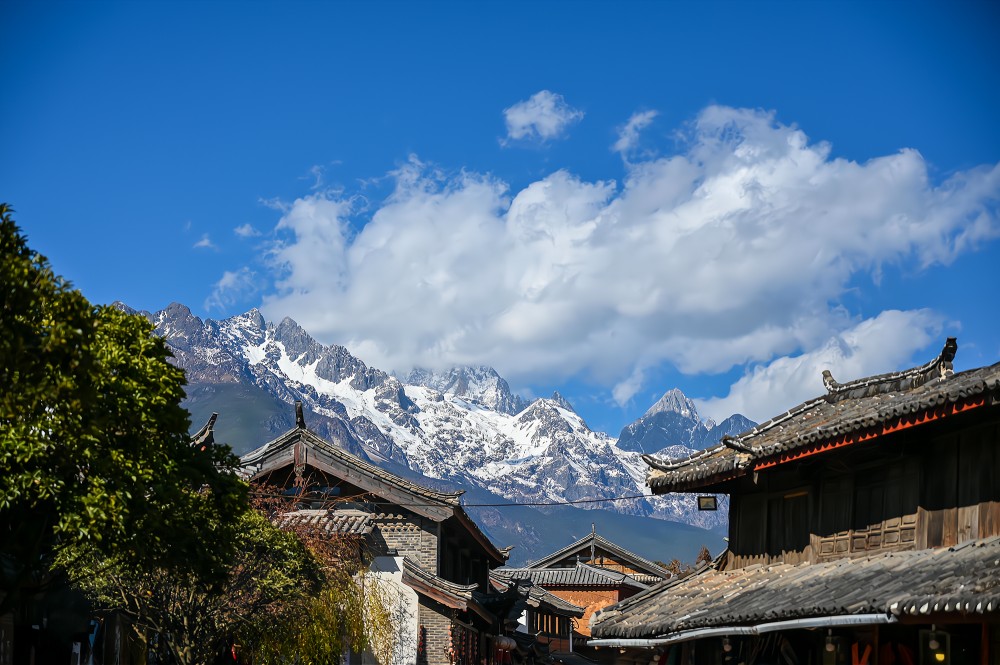


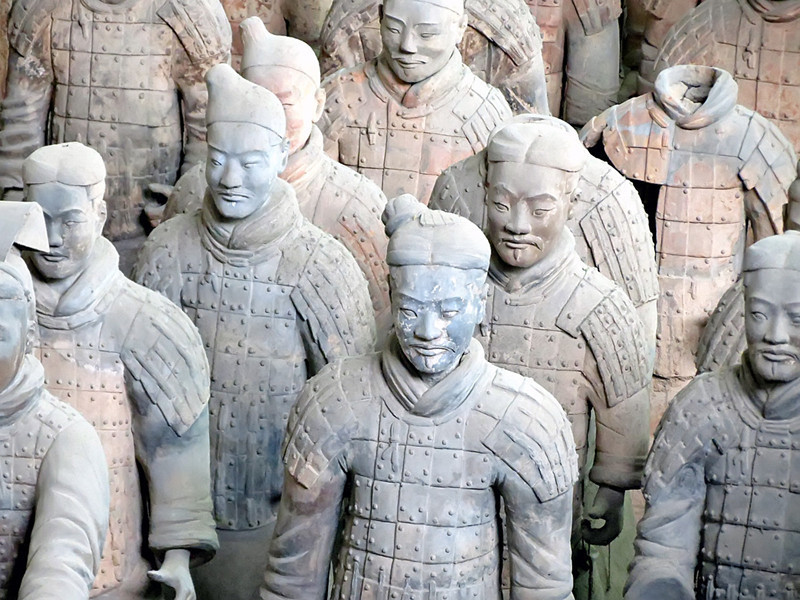
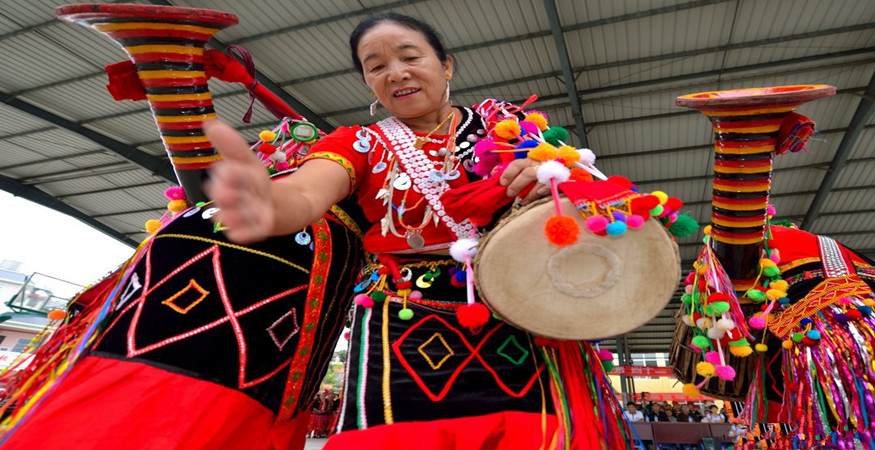




 Destinations
Destinations Attractions
Attractions Golf
Golf Customize
Customize About Us
About Us Contact
Contact

